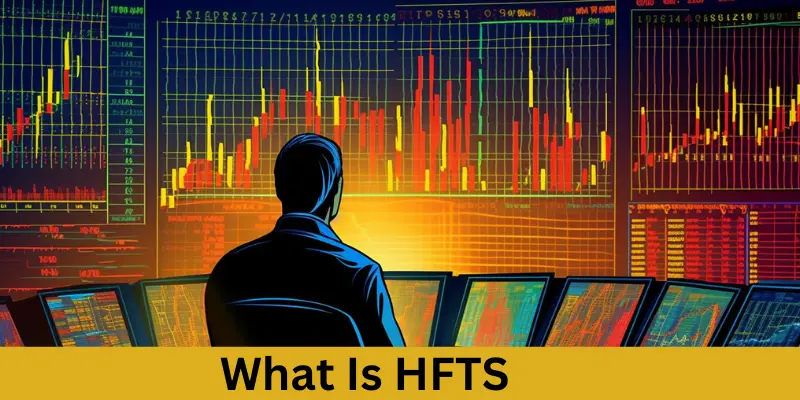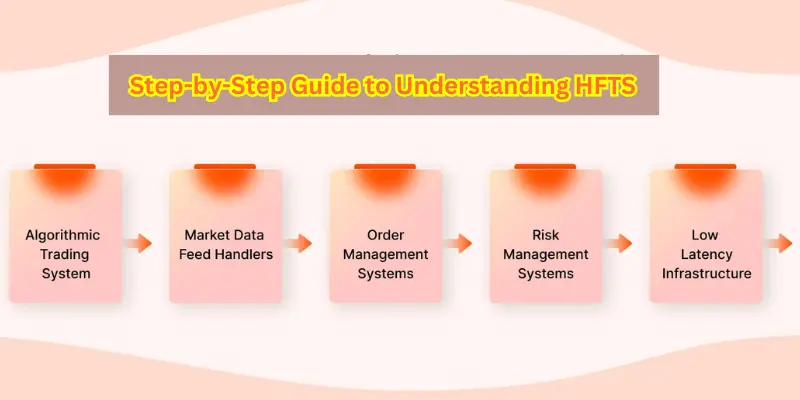Introduction
In todays fast paced world, we are constantly seeking ways to improve ourselves and unlock new opportunities for growth. If you are looking for a powerful tool that can help you take charge of your future, HFTS might be just what you need. Whether you are aiming for personal growth, professional success, or simply looking to make positive changes in your life, understanding the potential of HFTS can open doors to new possibilities.
In this article, well explore what HFTS is, how it works, and how it can transform your journey. So, lets dive in and discover the incredible impact it can have on your life.
Table of Contents
What Is HFTS?

HFTS stands for High-Frequency Trading Systems. Imagine you are playing a video game where you have to make quick decisions to win. Well, HFTS is like that but for buying and selling things on the stock market, like shares of companies. These systems use powerful computers to make a lot of trades in just a tiny fraction of a second way faster than any human could.
HFTS helps big companies make money by buying and selling quickly, trying to take advantage of small changes in prices. These systems are very smart and can react to the market faster than anyone else. While HFTS is used mostly by professionals and big businesses, it plays a big role in how money moves around the world.
In simple terms, HFTS are like super fast robots working behind the scenes to help companies make quick decisions and trade money in the blink of an eye.
You May Also Like It!
Volunteer Hartlepool | Fun Ways to Help Your Town
Liquid Illuminator | Simple Tips for a Natural Glow
How to Become an Affiliate of the Jama rocks Cruise Line
Exploring Music Communities Like CLLV to Fuel Your Passion
Why is HFTS Important?
HFTS might seem like a complex topic, but it plays a very important role in the financial world.
1. Faster Trading
- Quick Decisions: HFTS allows computers to make trades much faster than humans can. This helps companies buy and sell stocks almost instantly.
- Competitive Edge: The faster trades are made, the better chance companies have to make profits. HFTS gives them a big advantage over others in the market.
2. Liquidity in the Market
- Easier to Buy and Sell: Because HFTS helps make many trades quickly, it increases the number of buyers and sellers in the market. This is called “liquidity.”
- Stable Prices: When there are lots of trades happening, its easier to buy or sell stocks without affecting the price too much, making the market more stable.
3. Lower Costs
- Cheaper Trades: HFTS helps companies reduce the cost of buying and selling because the trades happen so quickly, saving time and money.
- Less Human Work: By using computers, companies do not need as many people to handle trades, which helps save money on salaries.
4. Innovation and Technology
- New Technologies: HFTS pushes companies to create faster, smarter computers and better technology to keep up with the market.
- Improvement for All: These advancements can help improve other areas of technology and make the whole economy more efficient.
5. Global Impact
- Affects the World Market: Since HFTS is used all around the world, it can impact stock prices and economies in many countries, not just one.
- Helps Keep the Economy Moving: By making sure stocks are traded quickly and efficiently, HFTS helps keep the financial world moving smoothly.
These points explain why HFTS is important, focusing on how it helps make markets faster, more efficient, and better for everyone.
Step-by-Step Guide to Understanding HFTS (High-Frequency Trading Systems)

Heres a simple step by step guide on HFTS (High-Frequency Trading Systems), designed to be clear and easy to understand:
Step 1: Learn What HFTS Is
What is HFTS?
- HFTS stands for High-Frequency Trading Systems. It involves using powerful computers to buy and sell financial assets (like stocks) at very high speeds. These systems make decisions and execute trades in fractions of a second.
Step 2: Understand How HFTS Works
- Fast Computers: HFTS uses super fast computers that can read market data, analyze it, and make decisions much faster than humans.
- Making Quick Trades: The systems make thousands (or even millions) of trades every day, buying and selling stocks based on tiny price changes that last only a moment.
Step 3: Know the Tools Used in HFTS
- Algorithms: These are the rules or instructions that the computers follow to decide when and what to trade.
- Data Feeds: HFTS uses special data feeds that provide the latest information about the stock market, like price changes, trades, and orders.
- Co-location: This is when HFTS computers are placed very close to the stock exchange computers, making the process faster. Its like being next in line at a ticket counter.
Step 4: Learn About the Types of Strategies in HFTS
- Market Making: HFTS can place both buy and sell orders for the same stock, helping create a stable market. It earns a small profit from each trade.
- Arbitrage: This strategy takes advantage of price differences for the same asset in different markets. The system buys at a lower price in one place and sells at a higher price somewhere else.
- Momentum Trading: HFTS can spot trends or patterns in price movement and trade quickly to benefit from those trends.
Step 5: Understand the Role of Speed in HFTS
- Speed Matters: The key to HFTS is speed. The faster a system can analyze data and make trades, the more profitable it can be. Even a fraction of a second can make a difference in the financial markets.
- Low Latency: HFTS strives for “low latency,” meaning the time between receiving data and executing a trade is as short as possible.
Step 6: Explore the Advantages of HFTS
- Efficiency: HFTS helps make markets more efficient by ensuring that prices quickly reflect all available information.
- Liquidity: HFTS adds more buyers and sellers to the market, which helps make it easier to buy or sell stocks without moving the price too much.
- Lower Costs: Faster trades often mean lower costs for traders and investors.
Step 7: Consider the Challenges of HFTS
- Market Instability: Because HFTS makes so many trades so quickly, it can sometimes cause sudden and unpredictable market moves.
- Regulation: Since HFTS is so fast and powerful, there are concerns about fairness and whether it gives some traders an unfair advantage. Regulators are working on rules to manage HFTS better.
Step 8: Learn About the Future of HFTS
- Constant Innovation: The technology behind HFTS is always improving, with even faster computers and smarter algorithms. This means HFTS will continue to play a big role in financial markets.
- Broader Use: While mostly used by big companies and investors, the principles of HFTS might eventually be used in other industries like healthcare or transportation.
By following these steps, you will have a good understanding of how High-Frequency Trading Systems (HFTS) work, their strategies, advantages, challenges, and their role in the financial world.
You May Also Like It!
Fashion Show para Ejecutivas | Professional Outfits for Women in Business
Pentahydrate for Ellmans Condensation | Benefits, Applications and Alternatives
Condensation | Discover the Magic of Water Drops
Copper Sulfate | Uses and Safety Guide
Advantages and Disadvantages of HFTS
Here a simple breakdown of the advantages and disadvantages of HFTS (High-Frequency Trading Systems):
Advantages of HFTS
| Advantages |
| Increased Market Liquidity What it Means: HFTS adds more buyers and sellers to the market, which means its easier to buy or sell stocks without affecting the price too much. Benefit: More liquidity helps make the market more stable and efficient. |
| Faster and More Efficient Trading What it Means: HFTS can execute trades in fractions of a second, much faster than humans. Benefit: This allows companies to take advantage of tiny price changes, making the market more dynamic. |
| Lower Transaction Costs What it Means: Because trades happen quickly, the cost of each trade is often lower. Benefit: This makes trading cheaper for large firms and investors, which could lower costs for everyone in the long run. |
| Price Accuracy and Fairness What it Means: HFTS ensures that prices reflect the latest market information almost instantly. Benefit: Prices in the market become more accurate and respond quickly to news, making it a fairer environment for everyone involved. |
| Market Efficiency What it Means: HFTS can help remove inefficiencies in the market, ensuring that prices are aligned with the current market conditions. Benefit: This leads to better decision making for investors, as they have access to more accurate and up to date information. |
Disadvantages of HFTS
| Disadvantages |
| Increased Market Volatility What it Means: Sometimes, the speed and volume of trades from HFTS can cause sudden and large price swings in the market. Drawback: This can lead to unexpected market drops or spikes, which may confuse or harm regular investors. |
| Unfair Advantage for Big Firms What it Means: Large companies with access to advanced technology can use HFTS to make trades faster than others. Drawback: This creates an uneven playing field where smaller traders or investors may struggle to keep up with the speed of the trades. |
| Risk of “Flash Crashes” What it Means: Due to the high volume of trades in a very short time, a small error in the system could trigger a large market crash (known as a “flash crash”). Drawback: These crashes can cause significant damage to the market and result in huge financial losses. |
| Job Losses in Traditional Trading What it Means: Since HFTS uses computers to make decisions, there less need for human traders to do the same job. Drawback: This can lead to job losses in the financial industry, especially for people who rely on traditional trading methods. |
| Increased Complexity What it Means: The algorithms and systems used in HFTS are very complex and can be difficult to understand or regulate. Drawback: This complexity can make it harder for regulators to monitor and ensure fair trading practices, leading to potential risks in the market. |
HFTS has both positive and negative effects on the financial markets. While it makes trading faster, cheaper, and more efficient, it also introduces risks like increased volatility and unfair advantages for big firms. Understanding both sides of HFTS is crucial for investors and regulators to ensure that the market remains fair and balanced.
Frequently Asked Questions (FAQs) About HFTS
Here are some common FAQs about HFTS (High-Frequency Trading Systems), written in simple, user-friendly language:
1. What is HFTS?
HFTS stands for High-Frequency Trading Systems. It involves using super fast computers to buy and sell stocks in fractions of a second. These systems make quick decisions and trades, helping companies take advantage of small changes in stock prices.
2. How does HFTS work?
HFTS uses powerful computers and algorithms (special instructions) to analyze market data and execute trades very quickly. These systems can handle thousands or even millions of trades each day, often faster than humans can think or react.
3. Why is HFTS important?
HFTS helps make markets more liquid (easier to buy and sell), increases market efficiency by ensuring prices stay up to date, and lowers the cost of trading. It also speeds up the overall trading process, allowing investors to respond quickly to changes in the market.
4. Who uses HFTS?
Large companies, banks, and investment firms typically use HFTS because it requires advanced technology and fast decision making. It is not used by individual investors, but it can impact the market that affects everyone.
5. What are the advantages of HFTS?
- Faster trading: It allows trades to happen almost instantly.
- Lower costs: Quick trades mean less money spent on transactions.
- Better market liquidity: More buyers and sellers in the market.
- More accurate pricing: Prices adjust quickly based on new information.
6. What are the disadvantages of HFTS?
- Market instability: Sometimes, the rapid trades can cause sudden and unexpected market changes.
- Unfair advantage: Large firms with fast computers may have an edge over smaller traders.
- Risk of crashes: A small mistake in HFTS systems could cause a sudden market drop, known as a “flash crash.”
7. Is HFTS safe for the market?
While HFTS can improve market efficiency, it also brings risks, such as creating sudden price changes and allowing large firms to dominate. Regulators are working to monitor and manage these risks to keep the market fair and safe for everyone.
8. Can individual investors use HFTS?
No, HFTS is mainly used by large institutions because it requires expensive technology and infrastructure. However, individual investors can still be affected by its actions in the market.
9. How does HFTS affect regular people?
While individual investors do not directly use HFTS, it affects them by making the market faster and more liquid. However, HFTS can sometimes cause quick price changes, which might impact the value of investments.
10. Will HFTS continue to grow in the future?
Yes, as technology improves, HFTS is expected to grow. Computers will continue to get faster, and HFTS strategies will likely become even more advanced, affecting markets worldwide.
These FAQs provide a clear, simple explanation of what HFTS is, how it works, and its impact on the market in easy to understand language.
Bonus Points on HFTS (High-Frequency Trading Systems)
Here is some bonus points of HFTS:
- Technological Innovation: HFTS drives innovation in computer technology, data processing, and algorithms, pushing the boundaries of what possible in the financial world.
- Market Impact: While HFTS can improve liquidity and efficiency, it also means that regular traders need to be aware of the potential market fluctuations caused by high speed trades.
- Regulatory Changes: Due to the power of HFTS, regulators are constantly working on rules to ensure its used fairly and does not create instability in the market.
- HFTS and Machine Learning: Some HFTS use advanced machine learning to predict market trends and make even smarter decisions, helping them stay one step ahead.
- Speed Wars: The race for the fastest computer systems has led to a “speed war” in the financial industry, where small time advantages can result in big profits.
- Ethical Concerns: There are ongoing debates about whether HFTS creates an unfair advantage for large firms, which could harm smaller investors who do not have access to the same technology.
These bonus points highlight some of the interesting and lesser known aspects of HFTS, adding depth to your understanding of how it affects the financial world.
Conclusion
High Frequency Trading Systems (HFTS) are powerful tools that use super fast computers to buy and sell stocks at incredible speeds. While they make trading faster and more efficient, they can also bring risks like market instability and unfair advantages for big firms.
HFTS plays a big role in shaping modern markets, and while its mostly used by large companies, it affects everyone in the financial world. Understanding how HFTS works helps us see both its benefits and challenges, and how its changing the way we trade.
You May Also Like It!
Phoenix SEO Services | Helping Websites Get Noticed Online
SoccerAgency.net | Your Guide to Soccer Success
BetterThisFacts | Your Go To Guide for Fun Facts
Microsoft Interview For Business Intelligence Analysts – Detail Guide










